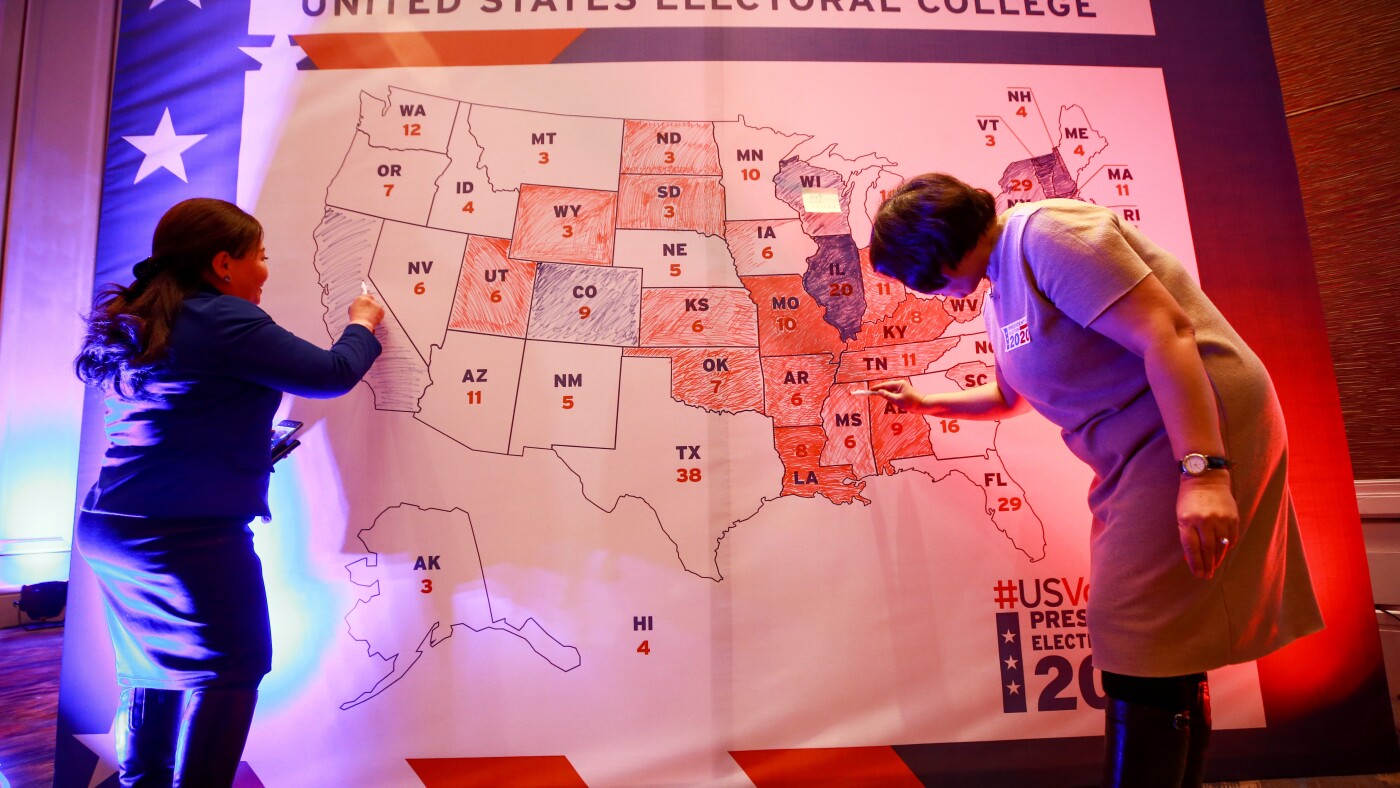
[ad_1]

People color in a U.S. electoral map during a 2020 presidential election watch party at the U.S. embassy in Ulaanbaatar, Mongolia.
Byambasuren Byamba-Ochir/AFP via Getty Images
hide caption
toggle caption
Byambasuren Byamba-Ochir/AFP via Getty Images
The counting of ballots can take longer in some places than in others.
In presidential elections, that difference can cause a candidate’s early advantage in a state to change as more localities report their results in the hours and, sometimes, days after polls close on Election Day.
In 2020, the phenomenon known as the “red mirage” or “blue shift” turned the hue of several seemingly red states — where then-Republican President Donald Trump appeared to be in the lead over the then-Democratic candidate Joe Biden — blue.

Trump and his allies responded by linking that change in states including Arizona, Georgia, Michigan, Nevada and Pennsylvania to baseless claims of widespread voter fraud involving mail-in ballots.
In fact, however, it stemmed from partisan divides in where voters live and their preferred way of casting ballots, plus, in some states, laws that slow the tallying of votes.
Republicans in smaller counties voting in person vs. Democrats in larger counties voting by absentee ballot
There are two trends that help explain the range of reporting speeds for election results:
- Voters in urban, more densely populated communities are generally more Democratic-leaning, and smaller, rural communities are often home to more Republican-leaning voters.
- Republicans tend to prefer voting in person, while Democrats have driven the rise of mail voting since the pandemic election of 2020, recent elections have shown. (A new NPR/PBS News/Marist poll indicates the trend is likely to continue in the 2024 general election.)
An analysis of the 2020 election by the MIT Election Data and Science Lab concluded that the differences in how quickly counties reported their results were “driven by the fact that smaller and more rural counties, which favored Trump, could report their ballots before the counties with hundreds of precincts and hundreds of thousands of voters.”
It took longer for many of those larger counties to report results because of the big batches of mail-in ballots they received, the analysis found. In some states, allowing absentee ballots that arrive after Election Day to be counted also slowed down counting.
And there’s another wonky factor to consider — whether a state’s laws allow election officials to process mail-in ballots before Election Day.
Some state election laws slow the counting of mail-in ballots
There’s an in-the-weeds process in election administration that’s called “pre-canvassing.”
It involves all of the steps needed to prepare mail-in ballots for scanning, including checking voters’ signatures on return envelopes, opening those envelopes and flattening the ballots inside.
When this processing is allowed to start varies depending on the state, and the MIT analysis found that states with laws that allow pre-canvassing before Election Day were faster to report results in 2020.

For this year’s presidential election, the states that do not allow processing before Election Day include two key swing states: Pennsylvania and Wisconsin.
While Arizona allows processing as soon as a completed ballot is received, election officials in that swing state say there are likely to be reporting delays because hundreds of thousands of voters are not expected to drop off their mail ballots until Election Day.
Still, some election watchers say the experience election officials have gained with mail-in ballots since the 2020 election, and some 2020 mail-in voters returning to in-person voting, could help reduce the time needed to finish counting this year.
But especially if the presidential race turns out to be close in any states, extra patience may be needed before voters see the true colors of the 2024 electoral map.
Edited by Benjamin Swasey
[ad_2]